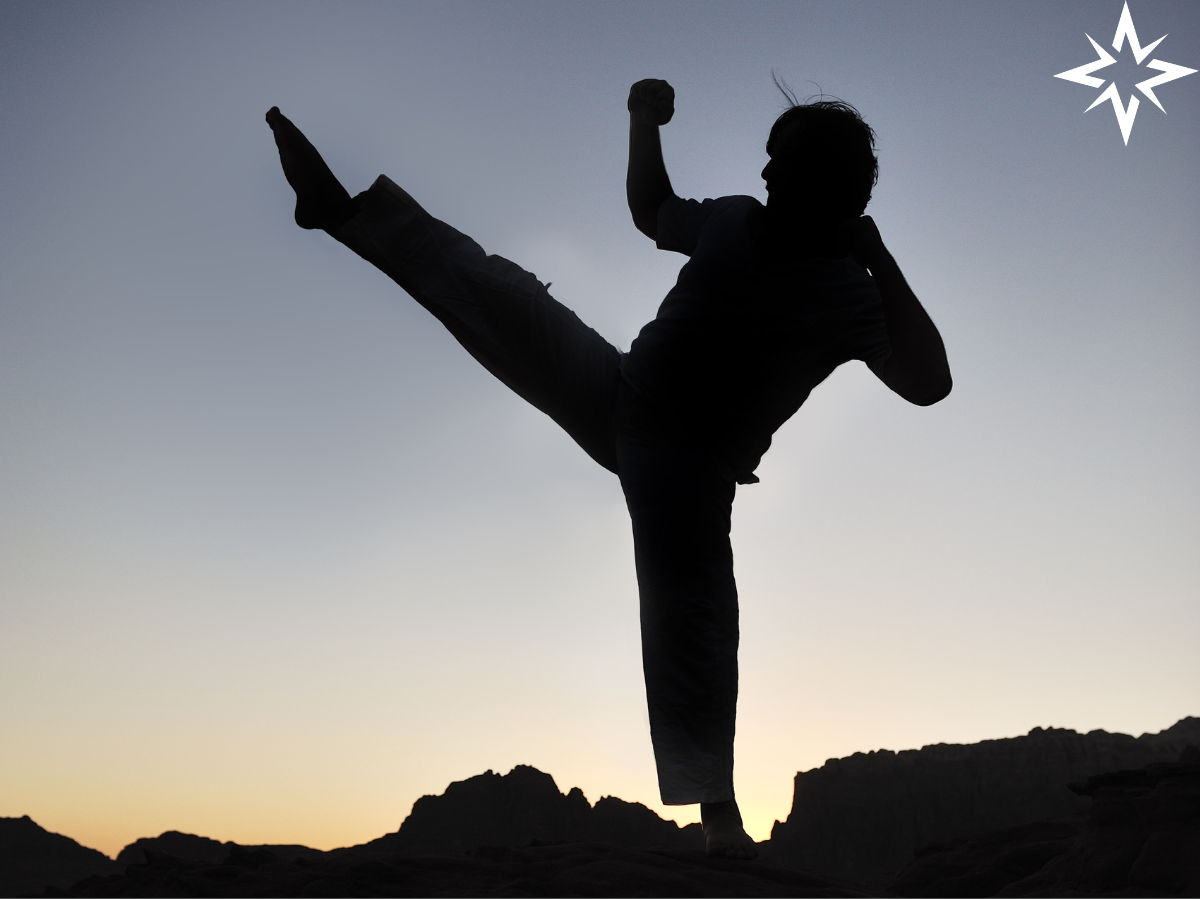Martial Arts at NSA and in America
By Tirzah Hopkins
Karate Fighter Silhouette by Zurijeta
Created in Canva
There are many different types of martial arts. One of the most common forms of martial arts done among children and teenagers in America is tae kwan do, a Korean martial art. Other very common martial arts practiced are MMA, Brazilian jiu jitsu, krav maga, American Kenpo, Japanese karate, aikido, judo, hapkido, muay thai, and kung fu. Some very uncommon martial arts practiced in America are bokator, bakom, lerdrit, dambe, systema, and silat.
One that wasn’t mentioned is kyokushin. I’ve done tournaments with kyokushin, and they are very tough. They are very hands-on, and one of the ways to get points in a sparring match is not to react to getting hit. Once you get to a black belt, you’re not allowed to spar with gloves or pads. While kyokushin is a Korean-Japanese style of karate, a lot of people in Russia do it.
One style that is so rare in America it wasn’t even in the rare martial arts list is a style called Pangai-Noon. This is the karate I practice, and have been for the past eight years. It isn’t very wide-spread because there aren’t many followers, mainly because it isn’t popular. The reason for this is that it’s very physically and mentally challenging and difficult to master. Because of this, it has also not evolved very much since it was first formed. Its founder, as far back as it can be traced, is Master Shushiwa.
Tayler Johnson is a student here at NSA who practices martial arts. She does Mixed Martial Arts. Hers is a mix of Silat, Jeet Kun Do, Muay Thai, Kali, and a little Jiu Jitsu. She’s been doing it for about two and a half years. When asked what it’s like, she said, “We are in a dojo, it is strict, sort of. The instructor starts us off with warmups (pushups burpees squats etc), and then we learn new techniques. If someone complains, we have to do more exercises. If someone did something halfway, or ‘not 110%’ then they may have to do more exercises. It was fun too. We did drills and matches (kickboxing, weapons, grappling) as well.”
Alexis Tuyo is also a student on NSA who does martial arts. She does Brazilian jiu jitsu. Her martial arts came straight from Brazil. Her instructors came from Brazil to America about three years ago. She has been doing jiu jitsu for about two and a half years. She’s currently a yellow belt because in jiu jitsu; you can’t get your blue belt until you’re sixteen. When asked what her favorite part about it was, Alexis said, “I think I would say sparring at the end of class. It's fun to work with higher belts. It's also fun just to lay there exhausted after you spar for around 10-15 minutes.”
Alexis Tuyo and her instructor after her belt test
Martial Arts is a very good thing to practice because it helps you stay in shape, learn to be resilient, toughens you up, and often teaches you to respect others, discipline, and self control. Also, depending on the art, it often teaches you practical life and fighting skills.
Tirzah Hopkins has been at NSA for about two years. She lives in Indiana, USA with eight of her eleven siblings and mom and dad. She has recently started writing for the Navigator. She enjoys spending time with family, hiking, karate, writing, and playing with babies.


